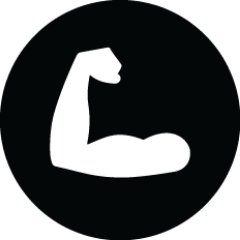
By Yolanda Lau
The nature of work is changing: Companies are increasingly thinking of work as project-based rather than role-based. We’re moving toward a project-based economy, and this shift toward the future of work is accelerating due to the pandemic. The more you can think of work as project-based versus role-based, the more agile your team and organization will be.
What Is Project-Based Work?
Project-based work has clear goals, milestones, and deliverables, and a defined start and end date. Projects may take hours or months or longer — the duration varies with every project and business need. But the work is aligned against business needs and objectives, not specific roles.
The Benefits Of Project-Based Work
As business leaders, we all want our teams to be agile and nimble, and embracing a project-based work mindset helps you increase speed and agility. A recent MIT and Deloitte report found that executives are increasingly thinking of their workforce as an ecosystem — drawing on the diverse skill sets of their universes of full-time workers and freelancers to meet business challenges.
With a project-based approach, you can innovate faster, quickly pulling skills internally and externally as needed. You can also operate more efficiently, dialing up and down skill-based resources by drawing on your workforce ecosystem.
How To Shift From A Role-Based To A Project-Based Organization
So, increasing agility, innovating more quickly, operating more efficiently, etc. — it all sounds ideal, but how do you evolve from a traditional, role-based organization to one that is project-based? There are a few critical steps to support success in this journey.
1. Change work definitions: First, you have to redefine the work. And this is an ongoing effort, not a one-time fix. Consider your immediate, short-term, and long-term objectives. How do you define these objectives in terms of projects? What skill sets do these projects need? Consider how your current workforce maps against these opportunities. Which skills do you need to source from freelancers and contractors? By developing what Deloitte calls “an adaptable network of teams,” you can build the flexible organization you need. Using a consulting firm that is experienced in project-based work can help you shift away from role-based work.
2. Focus on planning: For this model to work well, you must put an ongoing emphasis on planning. One of the advantages of working with on-demand talent is that you can pull in resources at short notice. However, when shifting to an overall project-based work approach, you need to plan ahead and have a project road map. Your road map will continually evolve to adapt to business strategy and needs, but you should always be thinking about the next project(s), particularly for your full-time employees.
3. Evaluate your processes: A flexible, on-demand workforce will not function well without robust processes and communications. The probability of redundancies, missed handoffs and other unforced errors will only increase when some or most of the team delivering the work includes freelancers, contractors, and consultants. Also, consider how you can improve the connections and communications with your team.
4. Build your talent bench: As you map the skills of your full-time employees against project-based work, you’ll find areas where you may need additional resources or different skill sets. Developing a bench of external talent makes it easy to pull in the right skill sets when and where you need them. I’ve shared my tips for building and integrating your on-demand workforce — this advice can help you scale your flexible workforce.
5. Hire and train for critical thinking skills: Soft skills, like adaptability and self-motivation, are essential in the future of work. Critical thinking is one of the keys to success with project-based work. Asking the right questions is critical. Employees and freelancers need to ensure they have the right level of clarity and detail so costs and effectiveness aren’t compromised.
Project-Based Work Is The Future Of Work
Not only how we work is shifting toward project-based work, but also how we hire team members and promote our own experiences. In the future of work, roles and buzzword-filled online profiles will become less important while project-based identities become more meaningful.
A project-based work model can help your team be more nimble and innovative. It’s time to start thinking about your team’s skill ecosystem and how you can organize and deliver in a project-based environment.
This article was originally published in Forbes.
Interested in the Future of Work? Join the Work of the Future #FutureOfWork Facebook Group.

Yolanda Lau is an experienced entrepreneurship consultant, advisor, and Forbes Contributor. She is also an educator, speaker, writer, and non-profit fundraiser.
Since 2010, she has been focused on preparing knowledge workers, educators, and students for the future of work.
Learn more about Yolanda here.



